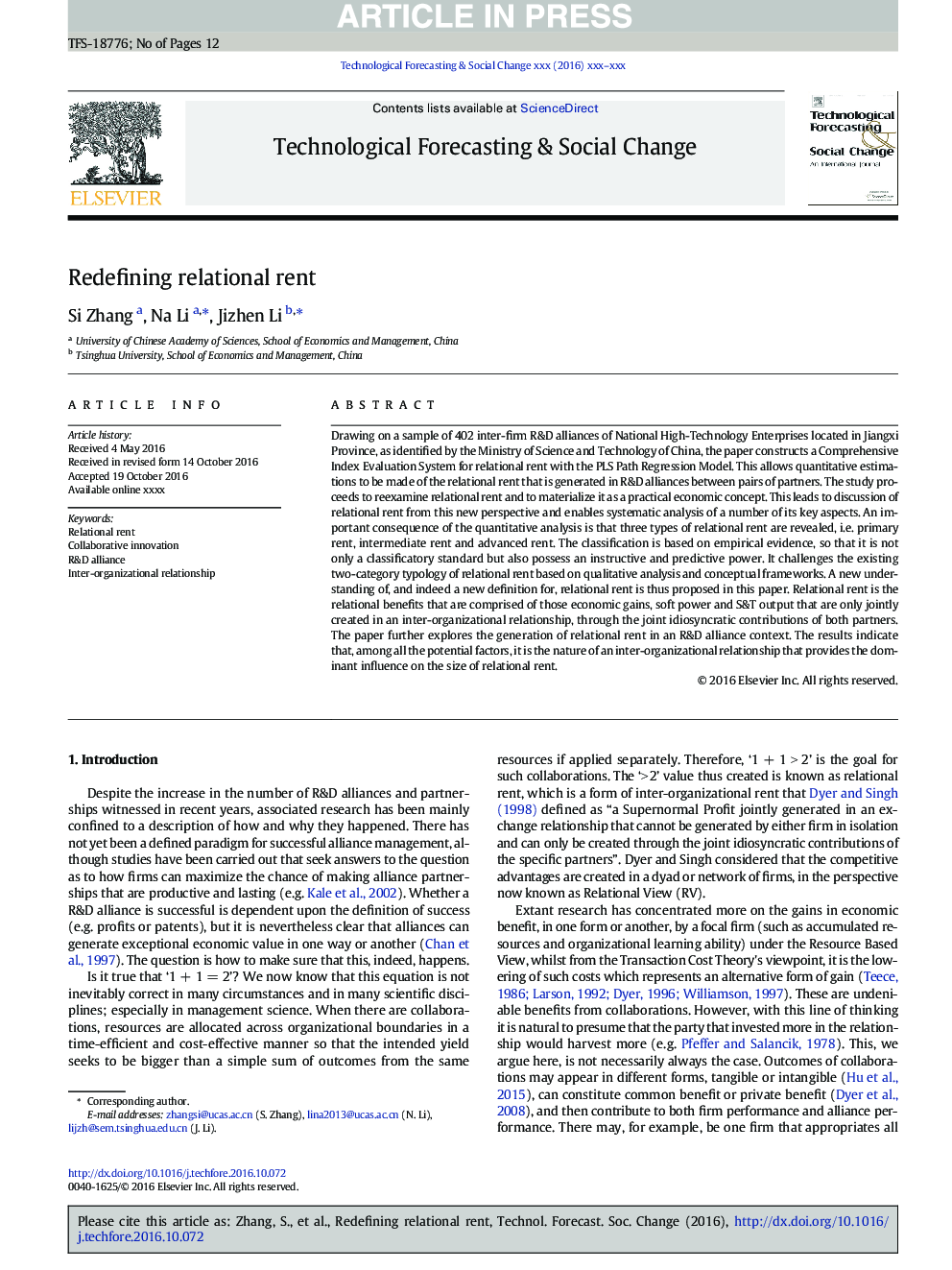| Article ID | Journal | Published Year | Pages | File Type |
|---|---|---|---|---|
| 5036915 | Technological Forecasting and Social Change | 2017 | 12 Pages |
Abstract
Drawing on a sample of 402 inter-firm R&D alliances of National High-Technology Enterprises located in Jiangxi Province, as identified by the Ministry of Science and Technology of China, the paper constructs a Comprehensive Index Evaluation System for relational rent with the PLS Path Regression Model. This allows quantitative estimations to be made of the relational rent that is generated in R&D alliances between pairs of partners. The study proceeds to reexamine relational rent and to materialize it as a practical economic concept. This leads to discussion of relational rent from this new perspective and enables systematic analysis of a number of its key aspects. An important consequence of the quantitative analysis is that three types of relational rent are revealed, i.e. primary rent, intermediate rent and advanced rent. The classification is based on empirical evidence, so that it is not only a classificatory standard but also possess an instructive and predictive power. It challenges the existing two-category typology of relational rent based on qualitative analysis and conceptual frameworks. A new understanding of, and indeed a new definition for, relational rent is thus proposed in this paper. Relational rent is the relational benefits that are comprised of those economic gains, soft power and S&T output that are only jointly created in an inter-organizational relationship, through the joint idiosyncratic contributions of both partners. The paper further explores the generation of relational rent in an R&D alliance context. The results indicate that, among all the potential factors, it is the nature of an inter-organizational relationship that provides the dominant influence on the size of relational rent.
Related Topics
Social Sciences and Humanities
Business, Management and Accounting
Business and International Management
Authors
Si Zhang, Na Li, Jizhen Li,
